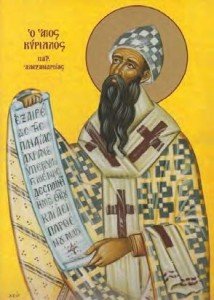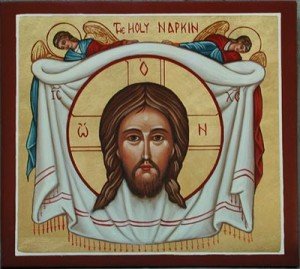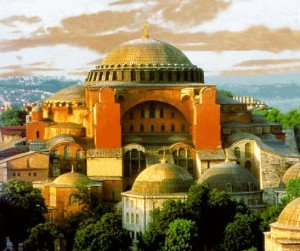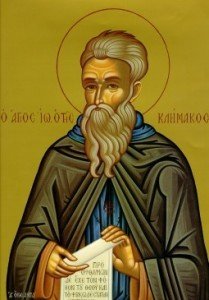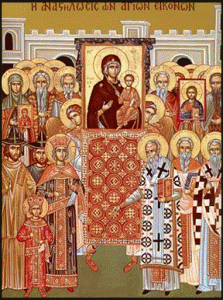 As we conclude this 22nd week after Pentecost, we are called to remember the Fathers of the 7th Ecumenical Council – the Council that put an end to Iconoclasm (i.e., the smashing of icons). It was the second Council of Nicaea and the seventh and last Council that is recognized by the entire Christian Church. This Council has taken to itself the symbol of perfection and completion represented by the number seven in Holy Scripture. It closed the era of the great dogmatic disputes, enabling the Church to describe, in definitions that exclude all ambiguity, the bounds of the one true faith. From that time every heresy that has appeared can be related to one or other of the errors that the Church, assembled in universal Councils, has anathematized from the first until the seventh Ecumenical Council. In reality, the Christian Church has failed since that time to ever again to hold a true Ecumenical Council.
As we conclude this 22nd week after Pentecost, we are called to remember the Fathers of the 7th Ecumenical Council – the Council that put an end to Iconoclasm (i.e., the smashing of icons). It was the second Council of Nicaea and the seventh and last Council that is recognized by the entire Christian Church. This Council has taken to itself the symbol of perfection and completion represented by the number seven in Holy Scripture. It closed the era of the great dogmatic disputes, enabling the Church to describe, in definitions that exclude all ambiguity, the bounds of the one true faith. From that time every heresy that has appeared can be related to one or other of the errors that the Church, assembled in universal Councils, has anathematized from the first until the seventh Ecumenical Council. In reality, the Christian Church has failed since that time to ever again to hold a true Ecumenical Council.
Our Gospel for this commemoration is appropriately taken from Luke’s account of the Parable of the Sower and our Epistle from Paul’s letter to the Galatians wherein he writes: “May I never boast of anything but the cross of our Lord Jesus Christ! Through it, the world has been crucified to me and I to the world.”
When you think of the parable we hear, it becomes obvious that we must always be on guard for what is spread in the name of Jesus Christ. We know this to be true, if any person, professing to be Christian, suggests that we should judge others and condemn others, they are spreading an untruth. Jesus clearly tells us that to be His follower we must make every attempt to unconditionally love others and to not judge them. I find that in our modern society, many spread a Gospel message which does not match the message that Jesus and His followers taught.
We know that the one way that we can use to make sure that we are truly believing in the message of Jesus is to think, like Paul, that we must only boast in the ‘cross’ of Christ. The cross is the ultimate symbol of complete and total love for others! As Jesus died on the cross, He forgave those who arranged for His death, He expressed love for those who unjustly accused Him, and He truly didn’t judge any who hated Him.

